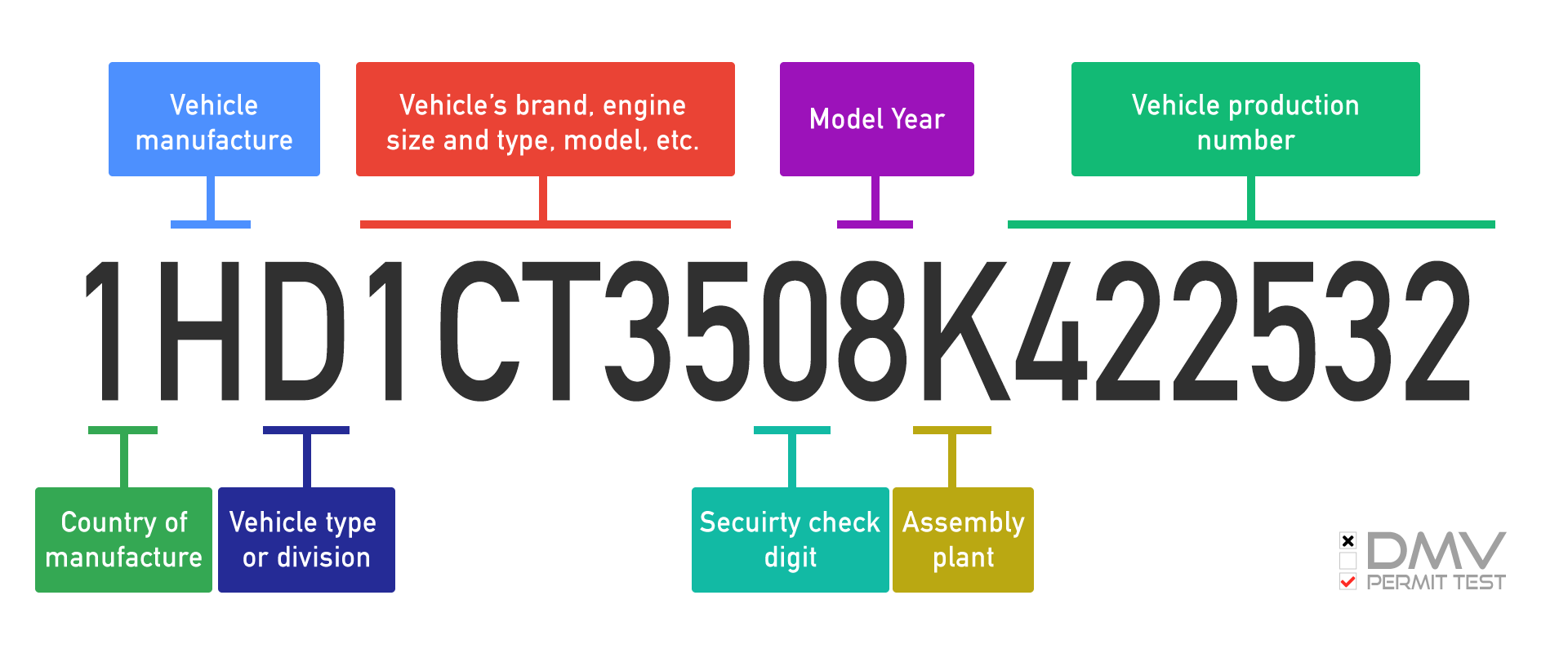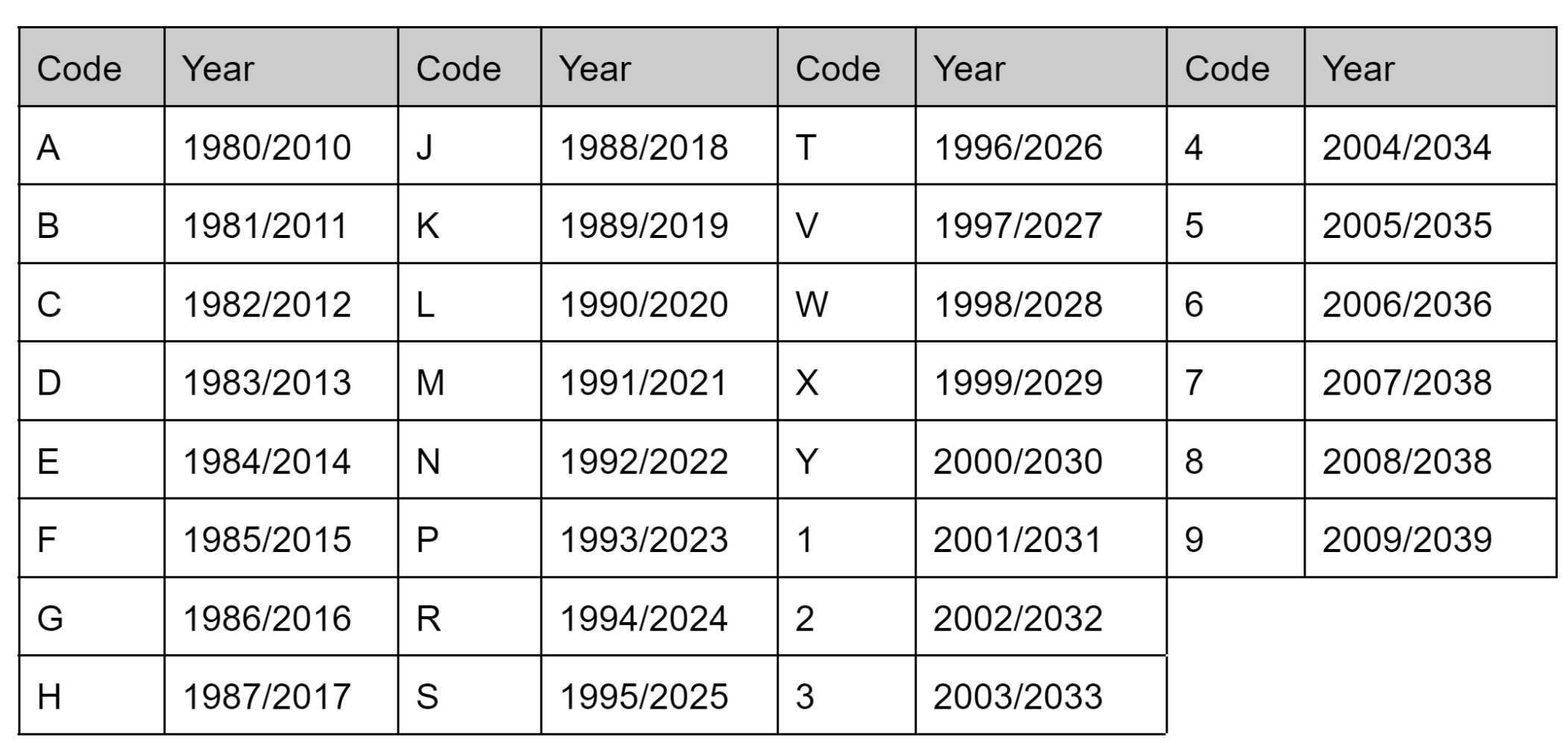Absolutely! Here’s a 2800-word article about determining a motorcycle‘s year by its VIN, incorporating
and
tags in place of elements for a more structured, article-like format.
The Vehicle Identification Number (VIN) is a unique identifier assigned to every motor vehicle, including motorcycles. It’s more than just a random string of characters; it’s a treasure trove of information about your bike, including its year of manufacture. Understanding how to decode your motorcycle’s VIN can be invaluable for maintenance, repairs, and even when buying or selling. This article will guide you through the process of determining a motorcycle’s year by its VIN, explaining the key components and variations you might encounter.

The VIN is typically a 17-character alphanumeric code. Each character position holds specific information, and while the exact details can vary slightly between manufacturers and countries, the general structure is standardized.
The First Three Characters: World Manufacturer Identifier (WMI)
The first three characters of the VIN, known as the World Manufacturer Identifier (WMI), identify the manufacturer and the region where the motorcycle was produced.

First Character: This character indicates the country of manufacture. For example, “J” signifies Japan, “1” or “4” signifies the United States, and “M” signifies Italy.
Characters 4-9: Vehicle Descriptor Section (VDS)
The Vehicle Descriptor Section (VDS) provides information about the motorcycle’s characteristics, such as its model, body style, and engine type.

These characters vary significantly between manufacturers, and specific decoding requires manufacturer-specific information.
Character 10: Model Year Indicator (MYI)
This is the crucial character for determining the motorcycle’s model year.
The 10th character follows a specific pattern:
Character 11: Plant Code
This character identifies the manufacturing plant where the motorcycle was assembled.
This information can be useful for tracing the motorcycle’s history.
Characters 12-17: Vehicle Serial Number (VSN)
The final six characters make up the Vehicle Serial Number (VSN), which is a unique sequential number assigned to each motorcycle.
This section ensures that no two motorcycles have the same VIN.
The VIN is typically located in one of several places on a motorcycle:
On the frame, usually near the steering head.
While the standardized VIN structure provides a general framework, there are variations and challenges to consider:
Pre-1981 VINs
Before 1981, there was no standardized VIN system.
Manufacturer-Specific Variations
Some manufacturers may use additional characters or variations within the VDS.
Regional Differences
VIN standards and regulations may vary slightly between countries.
Model Year vs. Production Date
The model year indicated by the 10th character may not always align perfectly with the production date.
Online VIN Decoders
Numerous online VIN decoders can help you decode your motorcycle’s VIN.
Why Decoding Your VIN Matters
Understanding your motorcycle’s VIN can be beneficial for various reasons:
Maintenance and Repairs
Buying and Selling
Verifying the VIN can help you ensure that the motorcycle’s information matches the documentation.
Insurance and Registration
Historical Research
Theft Recovery
Decoding your motorcycle’s VIN is a valuable skill that can provide you with essential information about your bike. By understanding the structure and variations of the VIN, you can accurately determine the model year and other key details. Whether you’re a seasoned rider or a new enthusiast, taking the time to decode your VIN can enhance your knowledge and appreciation of your motorcycle. Remember to utilize reputable resources and consult manufacturer-specific information when needed. With a little practice, you’ll be able to unlock the secrets hidden within your motorcycle’s unique identifier.
